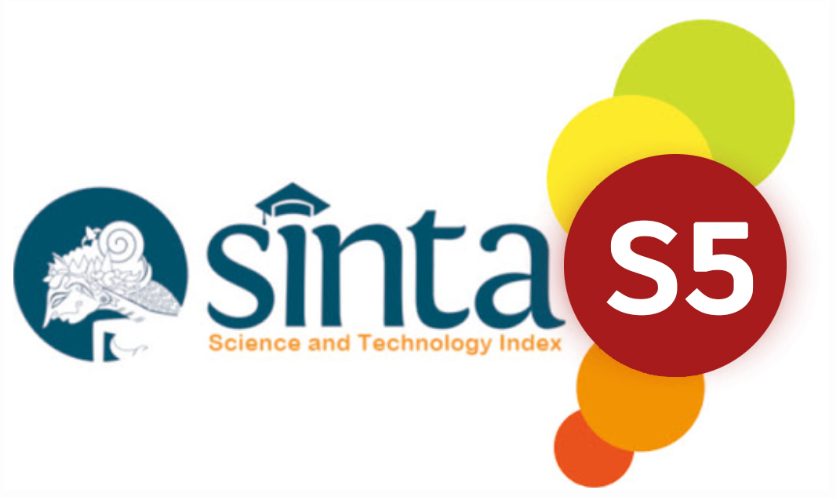Analysis of Risk Factors for Infant Diaper Dermatitis
DOI:
https://doi.org/10.32734/sumej.v3i2.3678Keywords:
Diaper Dermatitis, Infant, Risk FactorsAbstract
Infants have skin that is easy to get irritated and infected by microorganisms. The use of diapers in infants often causes diaper dermatitis and disturbs the comfort. The diaper dermatitis incidence is quite high in infants aged 0-24 months. This study purposes to determine the factors that influence the infant diaper dermatitis and assess the relationship between these factors and the diaper dermatitis. The study design is an analytical observational with a cross sectional study design. Data retrieval using interview method on respondents use a structured questionnaire to obtain risk factors which are associated with the diaper dermatitis incidence. Bivariate analysis was used to examine the relationship between the diaper dermatitis incidence and contributing factors. The study result is 27 infants (36%) of 75 infants had diaper dermatitis. It was obtained p value ≤ 0.05 for solid food (fishes, p = 0,018) and diarrhea (p = 0,021). The value of p > 0.05 for the variables of age, sex, maternal education level, neighborhood, solid foods (cereals, eggs and fruits), frequency of diaper changes, frequency of bathing, and the use of protective skin cream. The conclusion is there is a correlation between diaper dermatitis and the solid food (fishes) and diarrhea.
Downloads
References
H. L Ramba, “Skin irritation (diaper rash) in infants aged 0-12 months,†Journal of Pediatric Nursing STIKES Nani Hasanuddin Makassar, vol. 1, no. 2, pp.87-92. 2014.
B. J. Zitelli, S. C. McIntire, A. J. Nowalk, Zitelli and Davis' Atlas of Pediatric Physical Diagnosis. Elsevier Health Sciences. 2018.
B. Z. Dickey, Y. E. Chiu, Eczematous disorders’ in Nelson Textbook of Pediatrics, 20th edn, Elsevier, Philadelphia. 2016.
B. Seifi, Jalali, S., Heidari, M., “Assessment effect of breast milk on diaper dermatitis,†Dermatology reports, 9(1). 2017.
A. Wanjiku, “Socio-Demographic and Economic Determinants of Diaper Dermatitis among Children Aged 0-24 Months at Mbaghati District Hospital, Kenya: A Cross Sectional Study.â€. International Journal of Health Sciences and Research (IJHSR), vol. 6 no. 5, pp.239-247. 2016.
N. G. Bartels, L. Lünnemann, A. Stroux, J. Kottner, J. Serrano, & U. P. Blumeâ€, “Effect of diaper cream and wet wipes on skin barrier properties in infants: a prospective randomized controlled trial,†Pediatric dermatology, vol. 31, no. 6, pp.683-691. 2014.
C. H. Li, Z. H. Zhu, Y. H. Dai, “Diaper dermatitis: a survey of risk factors for children aged 1-24 months in China,†Journal of International Medical Research, vol. 40, no. 5, pp.1752-1760. 2012.
D. B. Ward, A. B. Fleischer, F. Jr., R. Steven, Krowchuk and P. Daniel, â€Characterization of diaper dermatitis in the United States,†Archives of Pediatric Adolescent Medicine, vol. 154, no. 9, pp. 943-946. 2000.
M. H. Celiksoy, E. Topal, O. Z. Hazıroglu, C. Alataş and M. S. Demirtas, “Characteristics of persistent diaper dermatitis in children with food allergy,†Pediatric dermatology, vol. 36, no. 5, pp.602-606. 2019.
W. D. James, T. G. Berger, D. M. Elston, Andrews' Diseases of the Skin 12th Ed. Elsevier Health Sciences. 2016.
D. Yaduwanshi and C. Kumari, “Frequency and prevalence of nappy rash in indian infant’s populationâ€. IJPE, vol. 1, no. 4, pp.25-32. 2012.
H. T. Shin, “Diagnosis and management of diaper dermatitis,â€. Pediatr Clin North Am, vol. 61, no. 2, pp.367-82. 2014.
R. S. Cana, N. K. Jusuf, I. B. Putra, T. Widyawati, and N. K. Arrasyid,†The profile of diaper dermatitis in infants,†Proceedings of the 2nd International Conference on Tropical Medicine and Infectious Disease - ICTROMI, pp.44-51. 2020.
Downloads
Published
How to Cite
Issue
Section
License
Copyright (c) 2020 Sumatera Medical Journal

This work is licensed under a Creative Commons Attribution-NonCommercial-NoDerivatives 4.0 International License.
The Authors submitting a manuscript do so on the understanding that if accepted for publication, copyright of the article shall be assigned to Sumatera Medical Journal (SUMEJ) and Faculty of Medicine as well as TALENTA Publisher Universitas Sumatera Utara as publisher of the journal.
Copyright encompasses exclusive rights to reproduce and deliver the article in all form and media. The reproduction of any part of this journal, its storage in databases and its transmission by any form or media, will be allowed only with a written permission from Sumatera Medical Journal (SUMEJ).
The Copyright Transfer Form can be downloaded here.
The copyright form should be signed originally and sent to the Editorial Office in the form of original mail or scanned document.











